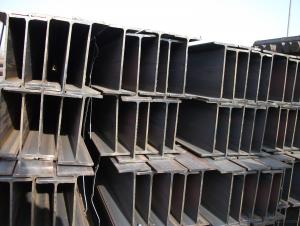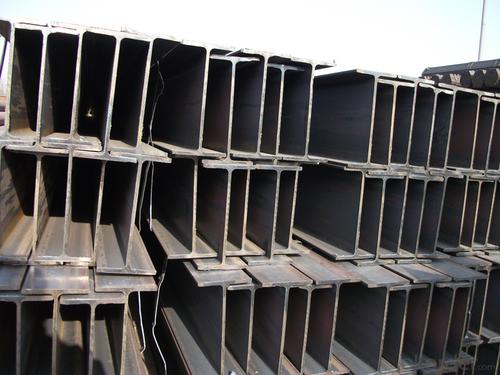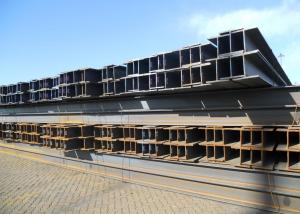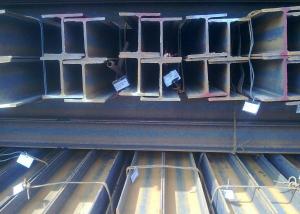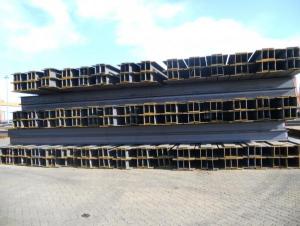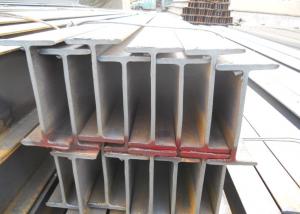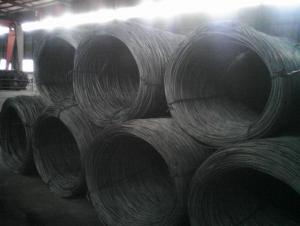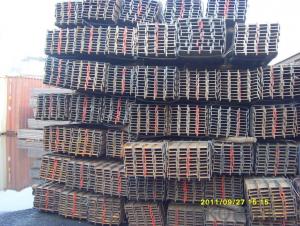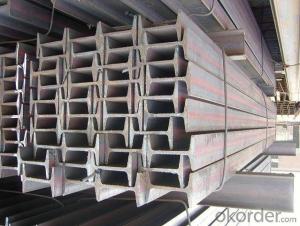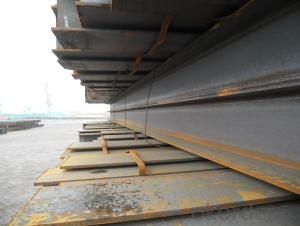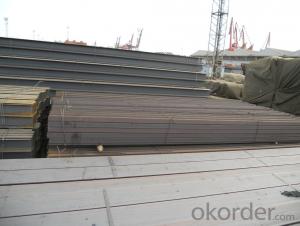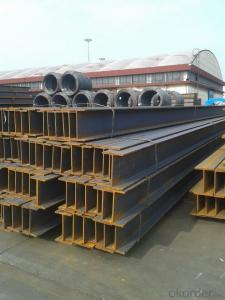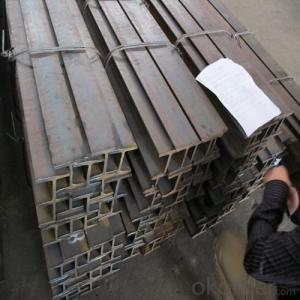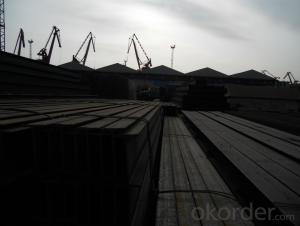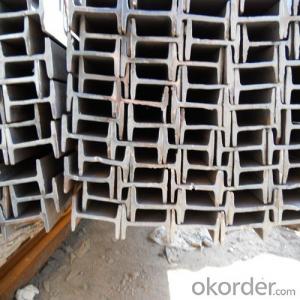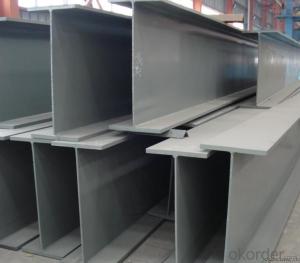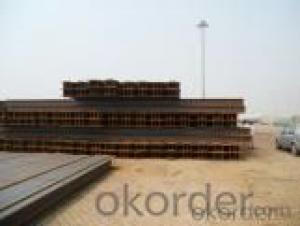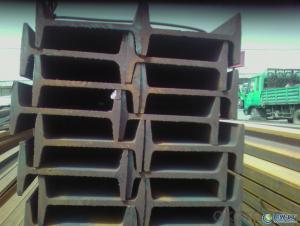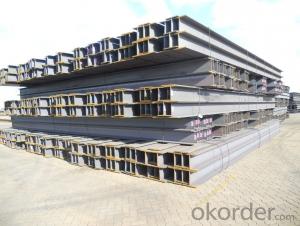Hot Rolled Structural Steel H-Beam JIS Standard
- Loading Port:
- China Main Port
- Payment Terms:
- TT or LC
- Min Order Qty:
- -
- Supply Capability:
- -
OKorder Service Pledge
OKorder Financial Service
You Might Also Like
Product Description:
OKorder is offering high quality Hot Rolled Steel I-Beams at great prices with worldwide shipping. Our supplier is a world-class manufacturer of steel, with our products utilized the world over. OKorder annually supplies products to European, North American and Asian markets. We provide quotations within 24 hours of receiving an inquiry and guarantee competitive prices.
Product Applications:
Hot Rolled Steel I-Beams are ideal for structural applications and are widely used in the construction of buildings and bridges, and the manufacturing, petrochemical, and transportation industries.
Product Advantages:
OKorder's Steel I-Beams are durable, strong, and resist corrosion.
Main Product Features:
· Premium quality
· Prompt delivery & seaworthy packing (30 days after receiving deposit)
· Corrosion resistance
· Can be recycled and reused
· Mill test certification
· Professional Service
· Competitive pricing
Product Specifications:
Manufacture: Hot rolled
Grade: Q195 – 235
Certificates: ISO, SGS, BV, CIQ
Length: 6m – 12m, as per customer request
Packaging: Export packing, nude packing, bundled
SIZE(mm) | DIMENSION(kg/m) |
100*100 | 16.9 |
125*125 | 23.6 |
150*75 | 14 |
150*150 | 31.1 |
148*100 | 20.7 |
198*99 | 17.8 |
200*100 | 20.9 |
248*124 | 25.1 |
250*125 | 29 |
Standard | Grade | Element (%) | ||||
C | Mn | S | P | Si | ||
GB | Q195 | 0.06~0.12 | 0.25~0.50 | ≤0.050 | ≤0.045 | ≤0.30 |
GB | Q235B | 0.12~0.20 | 0.30~0.70 | ≤0.045 | ≤0.045 | ≤0.30 |
-Mechanical Properties:
Mechanical Properties | Grade | Steel diameter(mm) | |||
≤16 | 16~40 | 40~60 | 60~100 | ||
Yield Point Δs/MPa | Q195 | ≥195 | ≥185 | - | - |
Q235 | 235 | 225 | 215 | 205 | |
Tensile Strength | Q195 | 315~390 | |||
Q235 | 375~500 | ||||
Elongation δ5% | Q195 | ≥33 | ≥32 | - | - |
Q235 | 26 | 25 | 24 | 23 | |
FAQ:
Q1: Why buy Materials & Equipment from OKorder.com?
A1: All products offered byOKorder.com are carefully selected from China's most reliable manufacturing enterprises. Through its ISO certifications, OKorder.com adheres to the highest standards and a commitment to supply chain safety and customer satisfaction.
Q2: What makes stainless steel stainless?
A2: Stainless steel must contain at least 10.5 % chromium. It is this element that reacts with the oxygen in the air to form a complex chrome-oxide surface layer that is invisible but strong enough to prevent further oxygen from "staining" (rusting) the surface. Higher levels of chromium and the addition of other alloying elements such as nickel and molybdenum enhance this surface layer and improve the corrosion resistance of the stainless material.
Q3: How soon can we receive the product after purchase?
A3: Within three days of placing an order, we will begin production. The specific shipping date is dependent upon international and government factors, but is typically 7 to 10 workdays.
Images:
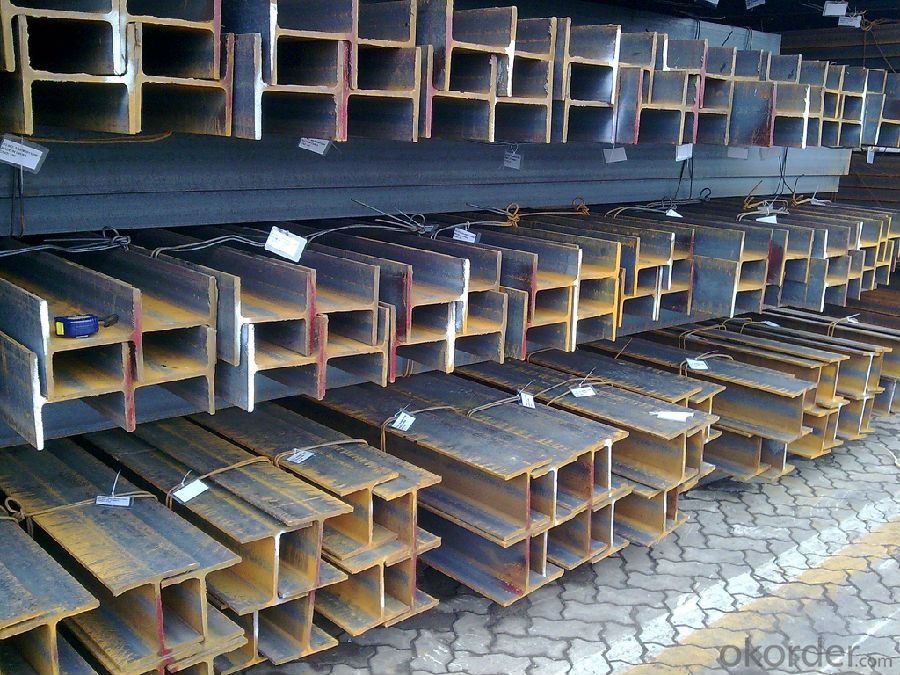
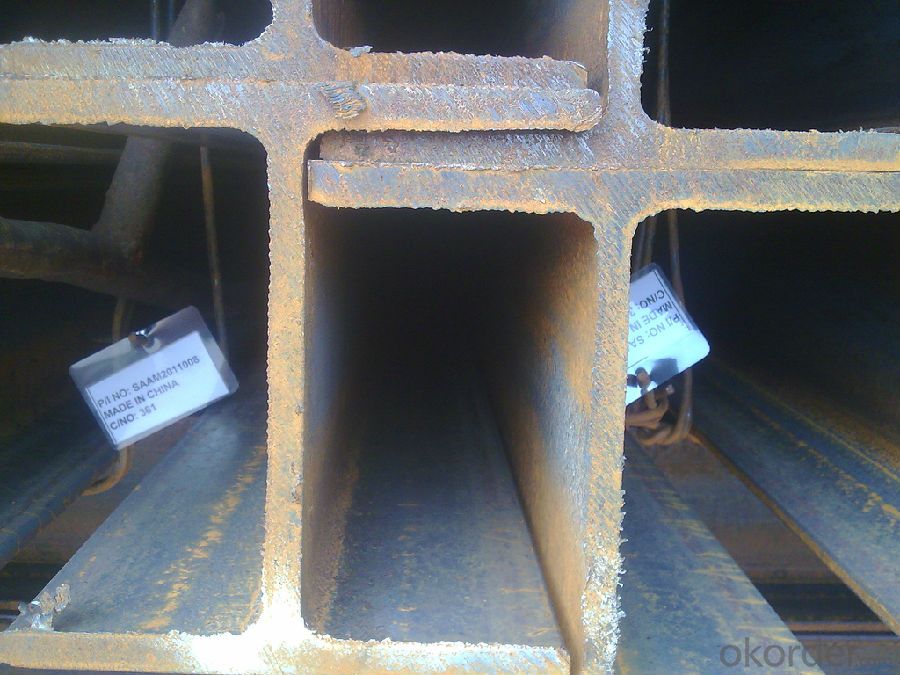
- Q: Are there any maintenance requirements for Steel H-Beams?
- Steel H-Beams require maintenance to ensure their structural integrity remains intact. Despite being a highly durable material, steel is still susceptible to various factors that can impact its stability over time. Here are some maintenance requirements to consider: 1. Conduct Regular Inspections: It is crucial to have qualified professionals regularly inspect the steel H-beams for any signs of damage, corrosion, or deformations. These inspections will help determine if any maintenance or repairs are needed. 2. Keep them Clean: Regular cleaning is necessary to remove dirt, dust, and debris that may accumulate on the surface of the steel beams. Use a mild detergent or specialized steel cleaner, followed by rinsing with water. Avoid abrasive materials or harsh chemicals that could damage the protective coating. 3. Prevent Corrosion: Steel H-beams are prone to corrosion, especially in humid or coastal environments. To prevent this, apply a protective coating or paint to act as a barrier against moisture and corrosive elements. Regularly inspect the coating for damage and touch up as needed. 4. Address Structural Issues: If any structural problems are identified during inspections, such as cracks, bends, or excessive deflection, immediate repairs should be carried out. Depending on the severity, repairs may involve reinforcing, welding, or replacing sections. It is essential to involve experienced engineers or contractors in steel structures for these repairs. 5. Monitor Load: Steel H-beams have specific load capacities. It is crucial to monitor and ensure that the applied loads do not exceed their design limits. Overloading can lead to structural failures or premature deterioration. Regularly assess the loads and consult professionals to ensure proper weight distribution and prevent potential issues. By adhering to these maintenance requirements, steel H-beams can maintain their structural integrity and longevity. Consult experts in steel structures or engineers for project-specific guidance.
- Q: Can steel H-beams be used in warehouse or distribution center construction?
- Yes, steel H-beams can be used in warehouse or distribution center construction. Steel H-beams are typically used as structural supports and provide strength and stability to the building structure. They are commonly used in industrial and commercial construction projects due to their durability and load-bearing capabilities.
- Q: Can steel H-beams be used in railway infrastructure?
- Yes, steel H-beams can be used in railway infrastructure. H-beams, also known as I-beams or universal beams, are commonly used in construction projects, including railway infrastructure. They are designed to provide structural support, strength, and stability to various types of structures. In railway infrastructure, steel H-beams are used for several purposes. They can be used as support beams for bridges, viaducts, and elevated railway tracks. The H-beams are often used in the construction of railway platforms, where they provide a sturdy and durable base for the platform structure. They can also be utilized in the construction of railway stations, tunnels, and other railway-related structures. Steel H-beams offer several advantages for railway infrastructure. They have high strength-to-weight ratio, making them capable of supporting heavy loads while being relatively lightweight. The H-shape of the beams provides excellent resistance against bending and torsion forces, making them suitable for withstanding the dynamic loads experienced in railway systems. Additionally, steel H-beams are durable and resistant to corrosion, which is crucial for railway infrastructure that is exposed to various weather conditions and environmental factors. They are also readily available in various sizes and lengths, allowing for flexibility in design and construction. Overall, steel H-beams are a versatile and reliable choice for railway infrastructure. They provide the necessary structural support and strength required for the safe and efficient operation of railway systems.
- Q: Can steel H-beams be used in the construction of hospitals or healthcare facilities?
- Yes, hospitals or healthcare facilities can make use of steel H-beams in their construction. Steel H-beams are extensively used in the field of construction due to their robustness, longevity, and adaptability. They provide exceptional structural support and are commonly employed in the construction of sizable edifices, including hospitals and healthcare facilities. In healthcare facilities, the utmost importance is placed on structural integrity and safety, both of which are met by steel H-beams. They possess the ability to endure heavy loads and bestow stability upon the building, thus ensuring the safety of patients, staff, and equipment. Steel H-beams also possess a remarkable resistance to fire and are non-combustible, a vital characteristic for the safety of healthcare facilities. Furthermore, steel H-beams offer a plenitude of design options. They can be effortlessly customized to meet specific architectural requirements and can support various types of roofing, flooring, and wall systems. This versatility allows for efficient space planning and the creation of larger open areas, often necessary in healthcare facilities to accommodate medical equipment, patient rooms, and specialized areas such as operating rooms and laboratories. Additionally, steel H-beams boast an extended lifespan and necessitate minimal maintenance. They are impervious to corrosion, pests, and decay, making them a dependable choice for healthcare facilities that need to remain operational over an extended duration. In conclusion, the strength, durability, safety features, design flexibility, and low maintenance requirements of steel H-beams make them an ideal choice for the construction of hospitals and healthcare facilities.
- Q: Can steel H-beams be used for religious buildings?
- Yes, steel H-beams can be used for religious buildings. Steel H-beams are widely used in construction due to their strength, durability, and versatility. They provide structural support and can be used for various applications, including religious buildings such as churches, mosques, temples, or synagogues. These beams can support the weight of the roof, walls, and other architectural elements, ensuring the stability and safety of the structure. Additionally, steel H-beams can be customized and fabricated to meet the unique design requirements of religious buildings, allowing for intricate designs and flexible layouts. Therefore, steel H-beams are a suitable choice for constructing religious buildings.
- Q: Can steel H-beams be used in data center or server room construction?
- Yes, steel H-beams can be used in data center or server room construction. Steel H-beams are commonly used as structural support in construction projects due to their high strength and durability. In data center or server room construction, where stability and load-bearing capacity are crucial, steel H-beams can provide the necessary strength to support heavy equipment and infrastructure.
- Q: Can steel H-beams be used for composite structures?
- Yes, steel H-beams can be used for composite structures. Composite structures typically refer to a combination of different materials, such as steel and concrete or steel and fiberglass, working together to form a stronger and more efficient structure. Steel H-beams are often used as a supporting element in composite structures due to their high strength-to-weight ratio and ability to withstand heavy loads. They can be combined with other materials, such as concrete or fiberglass, to create a composite structure that takes advantage of the unique properties of each material. Steel H-beams provide the necessary structural support while the composite materials contribute to additional strength, durability, and other desired characteristics. Overall, the use of steel H-beams in composite structures allows for the creation of versatile and efficient structures that can meet various engineering and architectural requirements.
- Q: How do steel H-beams compare to concrete beams in terms of cost and performance?
- Steel H-beams tend to be more expensive than concrete beams in terms of material cost. However, they offer superior performance in terms of strength, durability, and flexibility of design. Steel H-beams are lighter, allowing for easier transportation and installation, and they also have higher load-bearing capacity than concrete beams. Additionally, steel H-beams are resistant to corrosion and fire, making them a preferred choice in certain applications. While concrete beams may have a lower initial cost, steel H-beams provide long-term cost savings due to their longer lifespan and reduced maintenance needs.
- Q: Can steel H-beams be used in the construction of medical facilities or hospitals?
- Yes, steel H-beams can be used in the construction of medical facilities or hospitals. Steel H-beams are commonly used in construction due to their strength and durability, making them suitable for supporting the structural load of buildings, including medical facilities.
- Q: How do steel H-beams perform in areas with high heat or thermal expansion?
- Steel H-beams are known for their strength and durability, but their performance in areas with high heat or thermal expansion can be affected. Heat causes materials to expand, and steel is no exception. When exposed to high temperatures, H-beams can experience thermal expansion, which can lead to potential issues such as distortion, bending, or even failure. The extent to which H-beams are affected by high heat or thermal expansion depends on several factors, including the temperature, duration of exposure, and the specific type of steel used. Generally, as the temperature increases, so does the expansion of the steel beams. However, different types of steel have varying coefficients of thermal expansion, meaning some may expand more than others under the same conditions. To mitigate the effects of thermal expansion, engineers and architects can take several measures. One common approach is to incorporate expansion joints into the design. These joints allow the steel beams to expand and contract freely without causing damage or distortion to the overall structure. Expansion joints can be strategically placed at intervals along the beams to accommodate the expected expansion and prevent the buildup of excessive stress. Another method is to use steel alloys that are specifically designed to withstand high temperatures and have lower coefficients of thermal expansion. These alloys, such as stainless steel or certain types of heat-resistant steels, are better suited for areas with high heat or thermal expansion. They can better handle the expansion and contraction without compromising the structural integrity. Furthermore, proper insulation and ventilation systems can help regulate the temperature within a building or structure, reducing the risk of extreme heat exposure to the H-beams. Adequate insulation can minimize heat transfer, while effective ventilation can dissipate excess heat and maintain a more stable environment. In conclusion, steel H-beams can be affected by high heat or thermal expansion, potentially leading to distortion or failure. However, through careful design considerations, such as incorporating expansion joints and using appropriate steel alloys, along with proper insulation and ventilation systems, the performance of steel H-beams in areas with high heat or thermal expansion can be improved and their structural integrity can be preserved.
Send your message to us
Hot Rolled Structural Steel H-Beam JIS Standard
- Loading Port:
- China Main Port
- Payment Terms:
- TT or LC
- Min Order Qty:
- -
- Supply Capability:
- -
OKorder Service Pledge
OKorder Financial Service
Similar products
Hot products
Hot Searches
Related keywords
